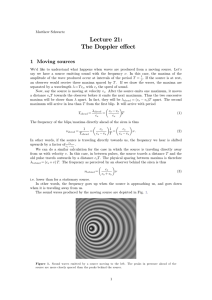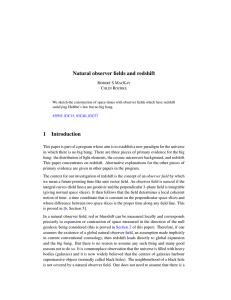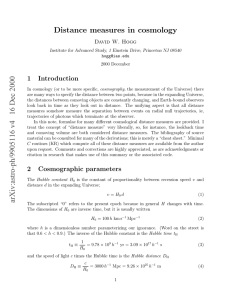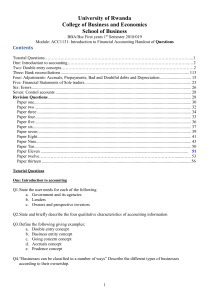PHYSICS 227: Cosmology Instructor: Dr. A. M. Wolfe (phone: 47435)
advertisement
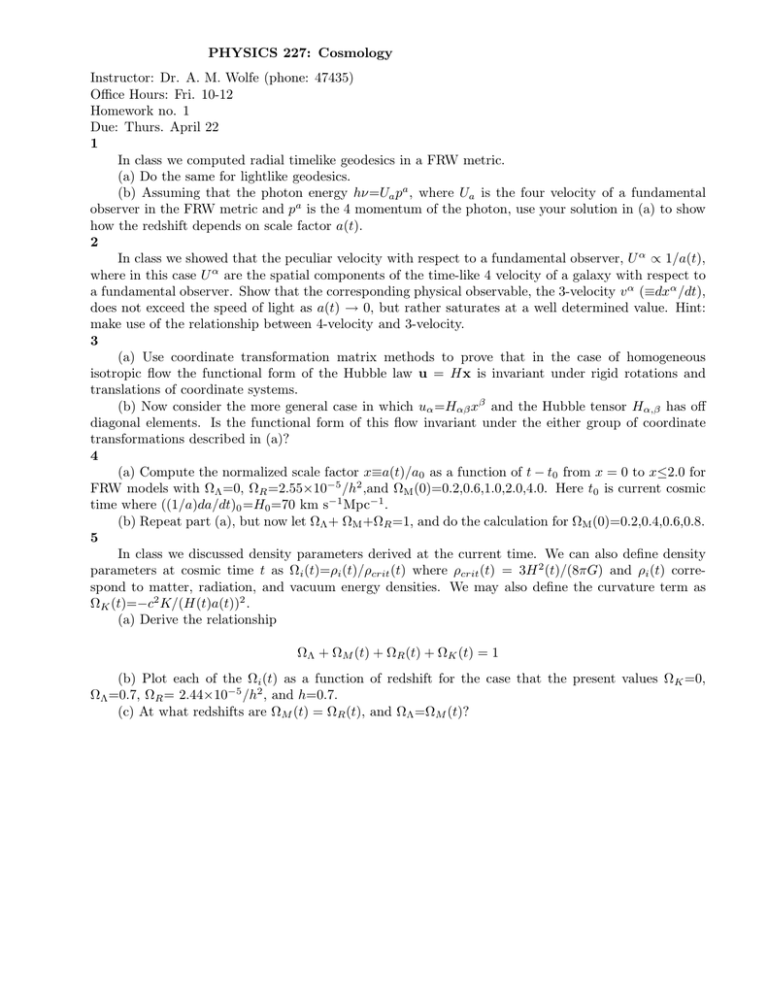
PHYSICS 227: Cosmology Instructor: Dr. A. M. Wolfe (phone: 47435) Office Hours: Fri. 10-12 Homework no. 1 Due: Thurs. April 22 1 In class we computed radial timelike geodesics in a FRW metric. (a) Do the same for lightlike geodesics. (b) Assuming that the photon energy hν=Ua pa , where Ua is the four velocity of a fundamental observer in the FRW metric and pa is the 4 momentum of the photon, use your solution in (a) to show how the redshift depends on scale factor a(t). 2 In class we showed that the peculiar velocity with respect to a fundamental observer, U α ∝ 1/a(t), where in this case U α are the spatial components of the time-like 4 velocity of a galaxy with respect to a fundamental observer. Show that the corresponding physical observable, the 3-velocity v α (≡dxα /dt), does not exceed the speed of light as a(t) → 0, but rather saturates at a well determined value. Hint: make use of the relationship between 4-velocity and 3-velocity. 3 (a) Use coordinate transformation matrix methods to prove that in the case of homogeneous isotropic flow the functional form of the Hubble law u = Hx is invariant under rigid rotations and translations of coordinate systems. (b) Now consider the more general case in which uα =Hαβ xβ and the Hubble tensor Hα,β has off diagonal elements. Is the functional form of this flow invariant under the either group of coordinate transformations described in (a)? 4 (a) Compute the normalized scale factor x≡a(t)/a0 as a function of t − t0 from x = 0 to x≤2.0 for FRW models with ΩΛ =0, ΩR =2.55×10−5 /h2 ,and ΩM (0)=0.2,0.6,1.0,2.0,4.0. Here t0 is current cosmic time where ((1/a)da/dt)0 =H0 =70 km s−1 Mpc−1 . (b) Repeat part (a), but now let ΩΛ + ΩM +ΩR =1, and do the calculation for ΩM (0)=0.2,0.4,0.6,0.8. 5 In class we discussed density parameters derived at the current time. We can also define density parameters at cosmic time t as Ωi (t)=ρi (t)/ρcrit (t) where ρcrit (t) = 3H 2 (t)/(8πG) and ρi (t) correspond to matter, radiation, and vacuum energy densities. We may also define the curvature term as ΩK (t)=−c2 K/(H(t)a(t))2 . (a) Derive the relationship ΩΛ + ΩM (t) + ΩR (t) + ΩK (t) = 1 (b) Plot each of the Ωi (t) as a function of redshift for the case that the present values ΩK =0, ΩΛ =0.7, ΩR = 2.44×10−5 /h2 , and h=0.7. (c) At what redshifts are ΩM (t) = ΩR (t), and ΩΛ =ΩM (t)?





